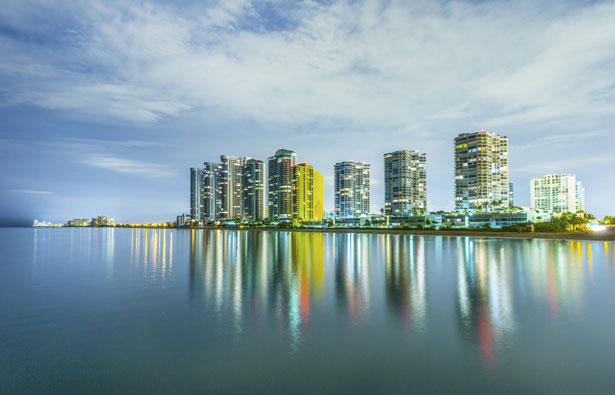
Miami: Paradise lost – again
MIAMI – Since its inception, the promise of paradise is the story of Miami. Founded in 1896, Miami by the 1920s had already experienced a frenzied real estate boom fueled by that promise followed by a catastrophic bust that revealed it as hollow.
That experience would be repeated more than once. It’s happening once more right now, although this time the crisis involves legal, moral, and ethical values as much or more than real estate values.
The year was 1981 when Time featured Miami on its cover under the headline “Paradise Lost.” The magazine wasn’t short of material for its extensive story on the city’s woes. Since the 1970s what public relations people like to call the “Magic City” had been awash with cocaine and drug money. The drug trade generated numerous and often spectacular acts of violence. The murder rate soared, forcing the county to rent refrigerated trucks to house all the bodies. Sharply rising crime rates were also fueled by the lack of opportunity many blacks faced in the newly global and increasingly bilingual city and by the arrival of 125,000 Cuban boat people from the port of Mariel, among which there were a few thousand criminals. The nadir came in 1980, the year of the Mariel boatlift, the bloody Liberty City race riot, and a successful and highly divisive anti-bilingual referendum targeting the burgeoning Cuban population.
Yet in a few years things gradually began to improve. A key factor was the federal government’s crackdown on drug smuggling through the Florida Straits, which drove much of the business and its gruesome killings to the Mexican border. South Beach, which in the 1980s was an area populated by a combustible mix of poor elderly Jews and some of the least savory of the Marielitos, was transformed among other things by a movement to restore the decaying Art Deco structures along the beach. Glamour quickly replaced grit in a peculiar form of gentrification, one centered around young singles rather than upwardly mobile families.
Miami Beach was on the cutting edge but hardly alone in a metropolis that experienced one of the biggest real estate bubbles in the nation. Then it burst, and in 2006 Time magazine surveyed the wreckage in a second major “Paradise Lost” story. Now comes another magazine cover story spotlighting the seamy side of paradise, Ken Silverstein’s “Miami: Where Luxury Real Estate Meets Dirty Money” (The Nation, October 21, 2013). Silverstein tells the story of a city the prosperity of which is significantly based on the breathtaking levels of economic inequality, financial skullduggery, and sheer corruption that characterizes the twenty-first century global neoliberal economy, especially in countries of Latin America, Africa, and the former Soviet Union.
The Nation’s report comes at an inconvenient time for the local movers and shakers. Miami, its boosters claim, is back. Silverstein’s article demonstrates that the rebound (happening almost exclusively at the top of the city’s economic hierarchy) is driven from ill-gotten gains and tax evasion around the world, from Angola to Argentina, from Russia to the good old U.S.A. Russian oligarchs, corrupt officials, and other high-worth/low principle individuals find expensive Miami real estate an ideal place to hide their money and enjoy it too.
They are enabled by a whole slew of real estate agents, lawyers, and other professionals and business people. They also benefit from an almost total lack of transparency and regulation. The organized real estate and international banking communities at the local and state levels closes ranks to mount fierce and successful political opposition against tighter government regulation of banking and real estate.
This laissez-faire, see-no-evil attitude should comes as no surprise. An astonishing 76 percent of condo buyers in Miami pay cash for properties that sell from several hundred thousand dollars to several million dollars or more. While the real estate market in the state and the nation ranges from shaky to disastrous, developers plan to build 150 new condo towers in Miami in the next few years.
The fact that this excellent article was published in The Nation, a progressive magazine with a very long and honorable history (1865-), a small circulation, and an emphasis on hard-hitting, critical journalism means it will be read by only a small fraction of the people who read the two Time pieces.
A more interesting question than the size of the national readership is the impact the analysis it will have in Miami. Will the media, including the powerful Spanish-language media, cover it? Will they highlight it, ignore it, dismiss it, or savage it? The fact that Silverstein’s narrative doesn’t match Miami’s official story no doubt will lead some advocates for the city to try to bury his text.
Judging by the opulence of the properties described in The Nation, Miami is still paradise – for a few, mostly not locals. For too many of the rest, lower wages, pension cuts, furloughs and layoffs make this playground for the international money set a fool’s paradise.


